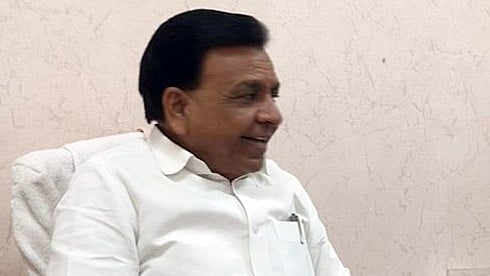As for conversations between working women, it was regular one. “After this meeting, we are going to, I have to rush back 30 kilometres to the airport to catch a flight to Bhopal for a presentation. I’m back tomorrow night,” said she, an accomplished and respected professional in the medico-social sector while narrating that her son had to be ready for school at 6 am the next day when she would wake up in another city. She ticked off the fact that she had done the prep for the pre-teen’s breakfast at 5.30 a.m. that her partner would take care of, spoke about the child's chess tournament and more, while connecting to an online conference call on a not-so-stable network.
My friend is not alone in Mumbai; millions of women in formal and informal jobs are jumping through hoops every day to do their professional work for money or self-identity, or both, while being super-wives and super-moms and super-every-other-role they are expected to fit into. For years — no, decades — I did a similar balancing act notching up the minutes it would take to get to Dadar station to catch the fast train back home before my child slept; if I got a few minutes to play and say “Good Night” to a child well cared for by my parents or in-laws, I considered myself fortunate. The care was a privilege beyond words.
My friend’s words and my memories invoked economist Claudia Goldin who had been awarded the Sveriges Riksbank Prize in Economic Sciences in Memory of Alfred Nobel for 2023, popularly called the Nobel Prize in Economics, only the previous day. Professor Goldin, 77, teaching Economics at Harvard University, was awarded the prize for — in the words of Royal Swedish Academy of Sciences — “having advanced our understanding of women’s labour market outcomes”. She is the first woman economist to be awarded the prize solo in the history of the Nobel Prize.
Her work of the past many decades, which received the award, focused on digging deep into the United States’ labour market and work trends from the gender perspective, and showed that women still lag behind men in their workforce participation, the share of how many reach the pinnacle of their chosen professions, and importantly in their pay across sectors. Goldin traced these trends through American history, from when most women worked on farms to the industrialised society, to show her findings commenting that industrialisation put working women at a disadvantage because it rewarded long and inflexible hours of work which was characteristically different from farm work. She spoke of structural issues here, not merely women’s willingness to work.
Importantly, Goldin’s work showed that American women’s workforce participation saw a rise with developments such as the passage of the Equal Pay Act, the Roe v Wade decision on abortion (which was overturned last year), the availability of the birth control pill, and the admission of women to many Ivy League schools. She once stated the changing roles of women in the last 50 years as “among the grandest advances in society and the economy”, noting that women out-paced men in education, streamed into the job market, and also found meaning in their work.
Yet, the gender gap persisted; it was (no) thanks to the structural issues such as long hours and inflexibility. We know there are compounding issues such as childcare facilities, mobility, and safety too. In a working paper, published coincidentally the day that the Nobel Prize was announced, Goldin spoke of the decade 1963-73 as “the quiet revolution” in the US when it seemed women found meaning in their work and would be on par with men in the workforce.
Goldin’s work should resonate in India where women’s workforce participation has seen a decline in recent decades as work moved from the formal to the informal sectors, and from farm to manufacturing to services. The gender gap in employment and gender pay gap hold special significance for Mumbai, a city that was popularly perceived as having a large number of women in the workforce, thanks to its reliable public transport, relatively safe public places and less sexism than in places like New Delhi.
The 2011 Census, the last available, burst the myth showing that, in Mumbai, women in the formal workforce was barely 16%; this was three percentage points higher than Delhi but southern cities fared better than Mumbai. Of course, the large number of women in the informal sector, if added, would swell these numbers but that is part of the problem. Women in the informal sectors face more uncertainty at work and earn less compared to men doing the same work. Their large presence, according to well-known economist Vibhuti Patel, is a sign of economic and gender helplessness where financial needs in low-income households force women to settle for such work despite the obvious disadvantages.
The recent report on the State of Working India by Azim Premji University showed a U-shaped pattern for urban married working women in India. As household incomes rise, usually with men bringing in more, women prefer to drop out of the workforce to focus on home-and-family; only a small percentage seek to return to their jobs or other work. The gender gap in work remains; so does the gender pay gap.
In 2018-19, women in urban India earned at least 19% less than men, according to the Monster Salary Index; the gender pay gap was seen across key industries including the IT and IT-enabled services where it was 26% — higher than the average. If it is a question of which partner brings home more and, therefore, which partner would stay at home for the family, men are placed to win hands down; even in coveted sectors with formal jobs such as medicine, law and IT, women earn less on average than men, even in the same jobs. The pandemic worsened the gender gap in work. A report by the Centre for Monitoring Indian Economy last year showed that the number of women in the urban workforce in India was lower by 22.1% in 2021 compared to 2019 and nearly 3 million fewer women were actively looking for jobs.
Splice it any which way, Goldin’s work has relevance and resonance across India, especially urban India though her research is based in the US. Three factors, in her view, affected the gender pay gap — higher investments in women’s education, raising the age of marriage (especially for women), and family life contributing to mothers stepping back from work, willingly or otherwise. The dilemma for women about continuing work and aspiring to close pay gaps or stepping off the carousel to stay home and look after the family is deeply personal; there is no one-size-fits-all answer. However, the issues that this dilemma raises are structural and societal; not personal at all. If working women had access to better quality childcare, more flexibility at work, better control over working hours, shorter commutes, there would be more women in the workforce. That day seems rather far away, even in Mumbai.
Smruti Koppikar, senior journalist and urban chronicler, writes extensively on cities, development, gender, and the media. She is the Founder Editor of ‘Question of Cities’










